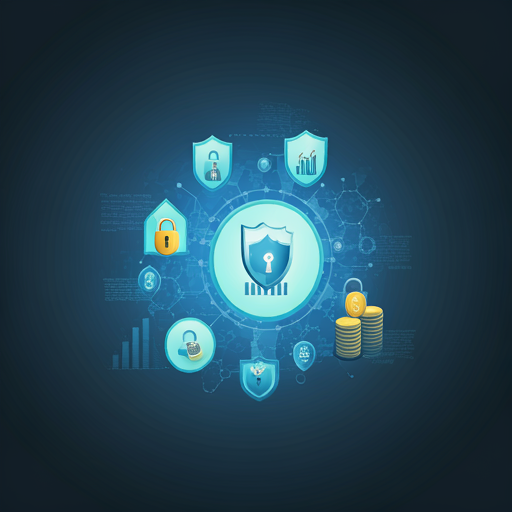Introduction to Cybersecurity in Finance
The Importance of Cybersecurity in the Financial Sector
In today’s digital landscape, cybersecurity is crucial for the financial sector. It protects sensitive information from unauthorized access. Financial institutions face constant threats from cybercriminals. These threats can lead to significant financial losses. Security measures must be robust and proactive. Every organization should prioritize cybersecurity. It is essential for maintaining customer trust. Trust is the foundation of any financial relationship. As technology evolves, so do the tactics of cyber attackers. Staying informed is vital for effective protection. Knowledge is power in the fight against cyber threats.
Overview of Common Cyber Threats
Cyber threats in finance are increasingly sophisticated. They can compromise sensitive financial data and disrupt operations. Phishing schemes often target employees to gain access to systems. These attacks exploit human vulnerabilities effectively. Ransomware can paralyze institutions, demanding payment for data recovery. Such incidents can lead to severe reputational damage. Insider threats also pose significant risks to financial security. Trust is essential in financial transactions. Understanding these threats is crucial for effective risk management. Awareness is the first step in prevention.
Types of Cyber Threats in Cryptocurrency
Phishing Attacks and Social Engineering
Phishing attacks and social engineering are prevalent in cryptocurrency. These tactics manipulate individuals into revealing sensitive information. Common methods include:
These strategies exploit psychological factors, making them effective. Victims often act impulsively, compromising their security. Awareness and education are critical in mitigating these risks. Understanding these threats can enhance personal security measures. Knowledge is essential for informed decision-making.
Malware and Ransomware Risks
Malware and ransomware pose significant risks in cryptocurrency. These malicious software types can encrypt data, rendering it inaccessible. Attackers often demand payment in cryptocurrency for decryption keys. This creates a financial burden on victims. Additionally, malware can steal sensitive information, leading to identity theft. Users must remain vigilant against these threats. Regular software updates can mitigate vulnerabilities. Awareness is crucial for effective defense strategies. Knowledge empowers users to protect their assets.
Best Practices for Securing Cryptocurrency Assets
Utilizing Hardware Wallets
Utilizing hardware wallets is essential for securing cryptocurrency assets. These devices store private keys offline, reducing exposure to online threats. They provide a robust layer of security against hacking attempts. Users should always purchase hardware wallets from reputable sources. This ensures the integrity of the device. Regularly updating the wallet’s firmware is also crucial. It protects against newly discovered vulnerabilities. Security is paramount in cryptocurrency management. Awareness leads to better protection.
Implementing Strong Passwords and Two-Factor Authentication
Implementing strong passwords and two-factor authentication is vital for securing cryptocurrency assets. A strong password combines letters, numbers, and symbols. This complexity makes it harder for attackers to guess. Users should avoid using easily accessible personal information. Regularly updating passwords enhances security further. Two-factor authentication adds an extra layer of protection. It requires a second verification step, often through a mobile device. This significantly reduces the risk of unauthorized access. Security is a continuous process. Awareness is key to effective protection.
Regulatory Framework and Compliance
Understanding Global Regulations on Cybersecurity
Understanding global regulations on cybersecurity is essential for financial institutions. Compliance with these regulations ensures the protection of sensitive data. Key regulations include:
Each regulation has specific requirements that organizations must follow. Non-compliance can result in significant penalties. Organizations should conduct regular audits to ensure adherence. Awareness of these regulations is crucial for risk management. Knowledge fosters a culture of security.
Compliance Standards for Cryptocurrency Exchanges
Compliance standards for cryptocurrency exchanges are critical for operational integrity. These standards help prevent money laundering and fraud. Regulatory bodies often require Know Your Customer (KYC) procedures. KYC ensures that exchanges verify the identities of their users. Additionally, Anti-Money Laundering (AML) regulations must be followed. These regulations mandate monitoring and reporting suspicious activities. Non-compliance can lead to severe penalties and loss of licenses. Organizations should implement robust compliance programs. Awareness of these standards is essential for sustainable operations. Knowledge protects both the exchange and its users.
Incident Response and Recovery Strategies
Developing an Incident Response Plan
Developing an incident response plan is essential for effective risk management. This plan outlines procedures for identifying and addressing security incidents. Key components include:
Each step is crucial for minimizing damage. Regular training ensures the team is prepared. Awareness of potential threats is vital. Knowledge leads to quicker recovery.
Steps for Asset Recovery After a Cyber Attack
Steps for asset recovery after a cyber attack are critical for minimizing losses. First, organizations must assess the extent of the damage. This evaluation helps prioritize recovery efforts. Next, they should isolate affected systems to prevent further breaches. Containment is essential for protecting remaining assets. Following this, data restoration from backups is necessary. Regular backups are vital for effective recovery. Finally, a thorough investigation should identify vulnerabilities. Understanding weaknesses can prevent future incidents. Awareness is key to improving security measures.
The Future of Cybersecurity in Finance
Emerging Technologies and Their Impact
Emerging technologies are reshaping the landscape of cybersecurity in finance. Innovations such as artificial intelligence and blockchain enhance security measures. AI can analyze vast amounts of data to detect anomalies. This capability allows for quicker threat identification. Additionally, blockchain technology provides transparency and immutability in transactions. These features reduce the risk of fraud significantly. Furthermore, biometric authentication methods are gaining traction. They offer a more secure alternative to traditional passwords. As these technologies evolve, they will redefine security protocols. Awareness of these advancements is essential for financial institutions. Knowledge fosters a proactive approach to cybersecurity.
Preparing for Evolving Cyber Threats
Preparing for evolving cyber threats is essential for financial institutions. Cybercriminals continuously adapt their tactics to exploit vulnerabilities. Regular risk assessments help identify potential weaknesses. This proactive approach minimizes the impact of attacks. Additionally, continuous employee training is crucial for awareness. Knowledgeable staff can recognize and respond to threats. Implementing advanced security technologies enhances overall protection. Strong defenses deter potential breaches effectively. Staying informed about emerging threats is vital. Awareness leads to better preparedness.

Leave a Reply